
Last week, David served as an instructor at the summer school “From electrons to material properties” for 35+ colleagues from the Comenius University in Bratislava, Masaryk University in Brno, and the University of West Bohemia, Pilsen, organized within their Colosse project.
The 3 intense days spent in the beautiful village Modra in Slovakia, packed with lectures, hands-on sessions, and scientific discussions, but also outdoor activities and informal chatting, were a culmination of several months of preparations (where the last two weeks were pretty intense :-D). The meeting concluded with great invited lectures by Davide Sangiovanni and Martin Friak, who demonstrated the application of the atomistic modelling tools in materials research.
A great thanks goes to Pavel Ondračka for his essential help in preparing the hands-on sessions!
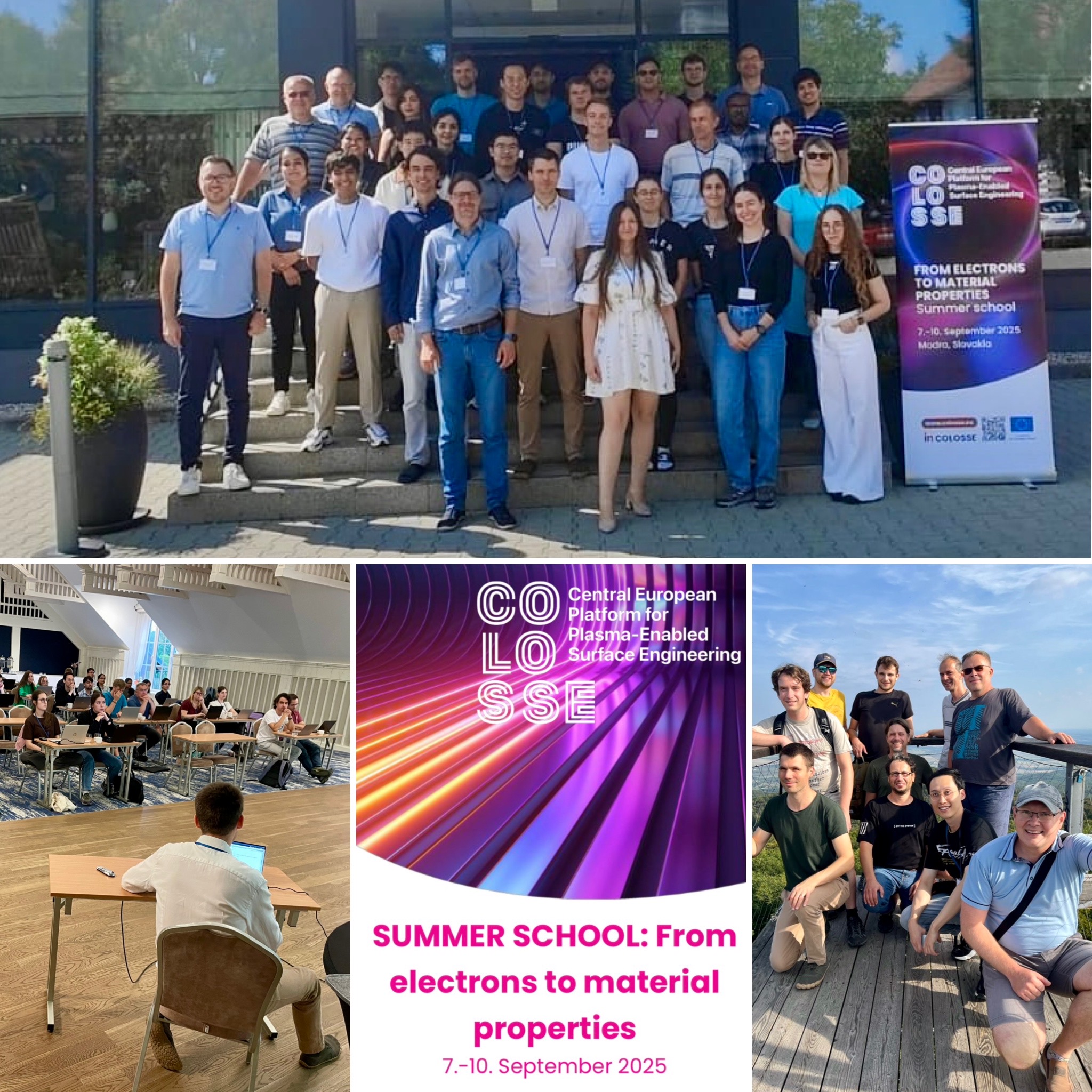
A new study by Amin Reiners-Sakic explores phosphorus segregation at grain boundaries in α-Fe, addressing both substitutional and interstitial sites. Using classical interatomic potentials combined with machine learning, the work shows that while substitutional segregation is energetically favored, the abundance of interstitial sites means they also play a key role in phosphorus enrichment. The study underlines the need to account for both site types and a broad spectrum of segregation energies to achieve predictions consistent with experiments.
This work is an internal collaboration with Christoph Dösinger, Alexander Reichmann and Lorenz Romaner.
A. Reiners-Sakic, A. Reichmann, C. Dösinger, L. Romaner, D. Holec: "Interstitials as a key ingredient for P segregation to grain boundaries in polycrystalline α-Fe". Scr. Mater., 268(116864), 116864 (2025). DOI: 10.1016/j.scriptamat.2025.116864
The CMS group is keeping its summer traditions! The BBQ in David's garden was, as usual, a gathering of current and former group members (and their families), while the CMS hike—our summer team-building activity—took us to the beautiful Bärenschützklamm this year.
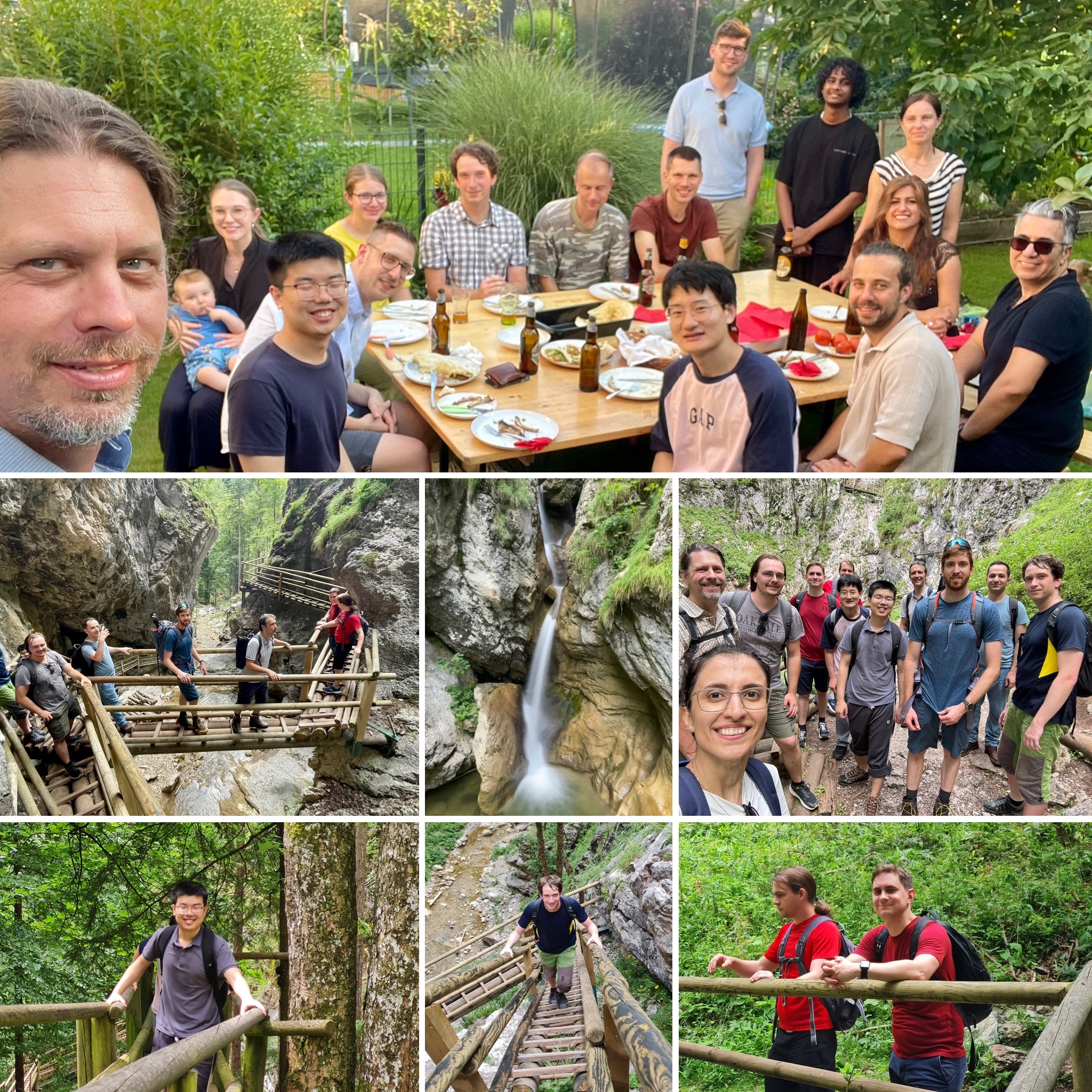
This work from our group investigates phase transformations and twinning in Ti alloys using density functional theory. Studying pure Ti and alloys with elements such as Al, Si, V, Cr, Fe, Cu, Nb, Mo, and Sn, the results show how alloying influences β-stabilization, martensitic transformations, and twinning behavior. The findings offer guidance for designing new Ti-based alloys with tailored properties for specific applications.
This work is a result of FFG project T3Design with Thomas Klein and José Neves (LKR Ranshofen).
D. Holec, J. Grillitsch, J.L. Neves, D. Obersteiner, T. Klein: "Ab initio modeling of TWIP and TRIP effects in β-Ti alloys". J. Mater. Res., (2025). DOI: 10.1557/s43578-025-01657-w
The CMS group welcomed Martin Friák and Michal Krejčí (Institute of Physics of Materials, Czech Academy of Sciences) for the Materials Science Colloquium on Quantum Computing (June 30–July 1, 2025). Their talks “Quantum computing: fundamental concepts and the current state of the art” and “Applications of quantum computing in solid-state physics” provided an introduction to this fascinating field.
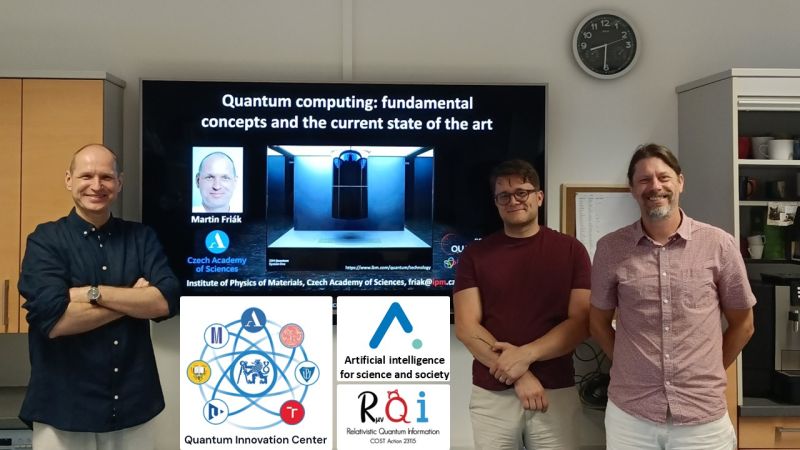
David attended the MSMF-11 Conference on Materials Structure and Micromechanics of Fracture in Brno, Czechia (June 21–23, 2025), where he gave a talk in the same lecture rooms as his very first presentation 21 years ago. The event featured also excellent contributions from Montanuniversität Leoben colleagues, and offered a great opportunity for discussions and a reunion with many old colleagues.
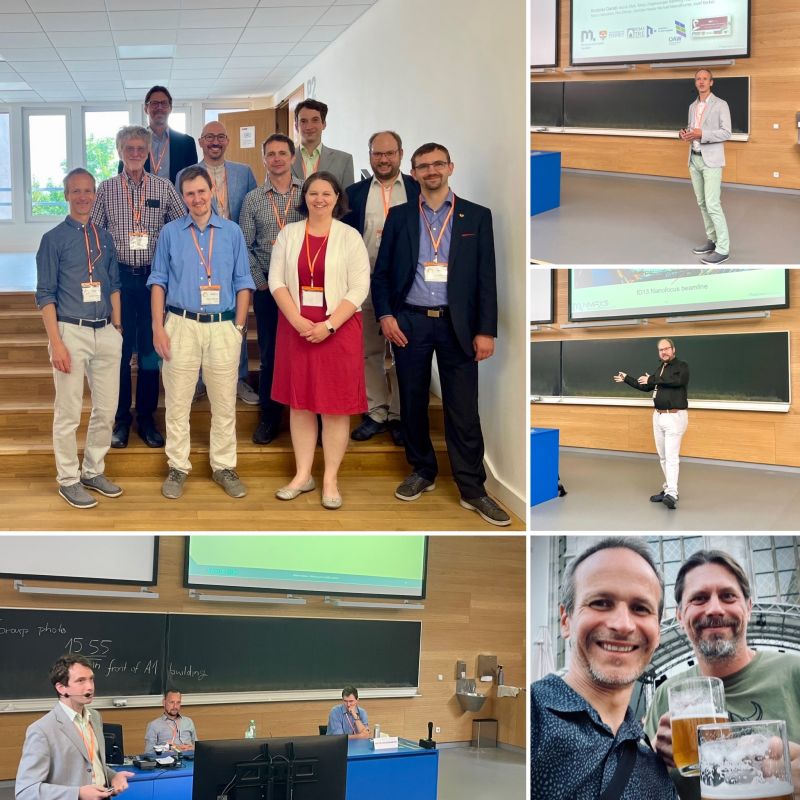
A new study, carried out by Thomas Leiner, explores hydrogen storage in doped graphene and carbon nanotubes using molecular dynamics simulations within the Matlantis framework. By analyzing different adatom types and positions, the work shows that group II elements like calcium and strontium significantly enhance hydrogen uptake, while light elements such as lithium and sodium improve gravimetric storage capacity. The results provide useful insights into designing carbon-based materials for efficient hydrogen storage applications.
T. Leiner, D. Holec: "Revealing trends in catalytic activity of adatoms for hydrogen adsorption on carbon: A case study of graphene and carbon nanotube". Carbon Trends, 20(100535), 100535 (2025). DOI: 10.1016/j.cartre.2025.100535
Dominik Gehringer investigated solute segregation at grain boundaries in Ni-based model alloys. Using quantum-mechanical calculations, the study demonstrates how compositional disorder in multi-component alloys affects segregation energies and grain boundary enrichment. The results provide a statistical framework to extract segregation enthalpy and entropy, offering insights relevant for understanding and designing complex engineering alloys.
D. Gehringer, L. Romaner, D. Holec: "Segregation to grain boundaries in disordered systems: an application to a Ni-based multi-component alloy". Mater. Des., 254(114074), 114074 (2025). DOI: 10.1016/j.matdes.2025.114074
Tradition is tradition. So once again we went as a group to the Präbichl for an outdoor team-building day. This time with a combination of skiing, snow walking and sledging.
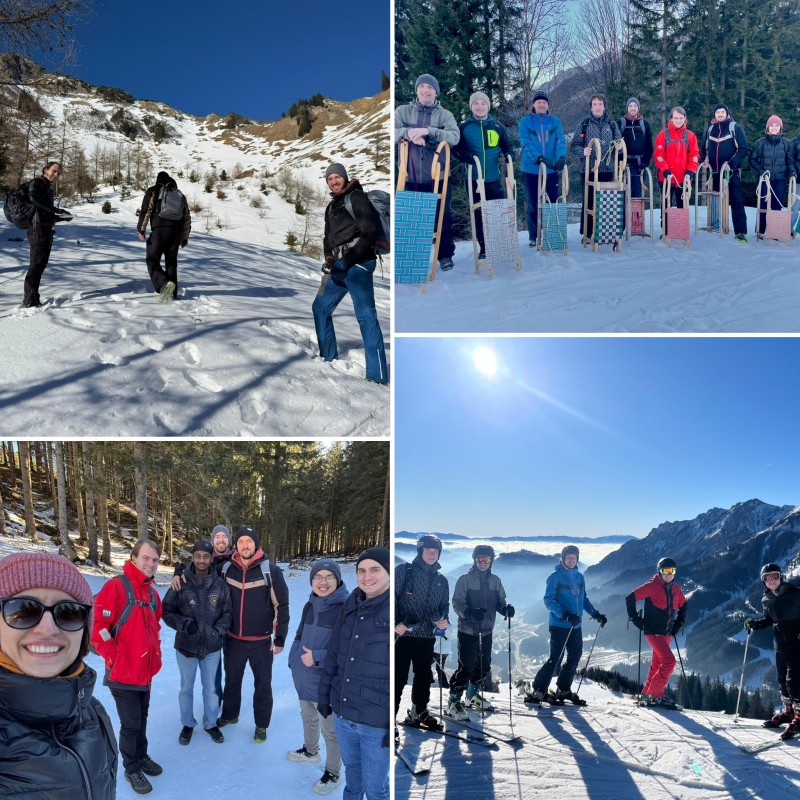
Amorphous materials are elastically anisotropic. DFT simulations are typically limited to the lower hundreds of atoms modelled within periodic boundary conditions, resulting in an anisotropic elastic response. Molecular statics could be the solution if a potential is available. In the present work we present a workflow for using DFT to train an interatomic ML potential for amorphous SiN. We then find that approximately 3500 atoms is the critical model size to obtain a truly isotropic elastic response.
This work is an outcome of a joint FWF-GAČR project, a collaboration with Rostislav Daniel (MUL), Paolo Nicolini (CTU Prague, CZ) and Prahanth Srinivasan (Uni Stuttgart, DE).
G. Nayak, P. Srinivasan, J. Todt, R. Daniel, P. Nicolini, D. Holec: "Accurate prediction of structural and mechanical properties on amorphous materials enabled through machine-learning potentials: A case study of silicon nitride". Comput. Mater. Sci., 249(113629), 113629 (2025). DOI: 10.1016/j.commatsci.2024.113629